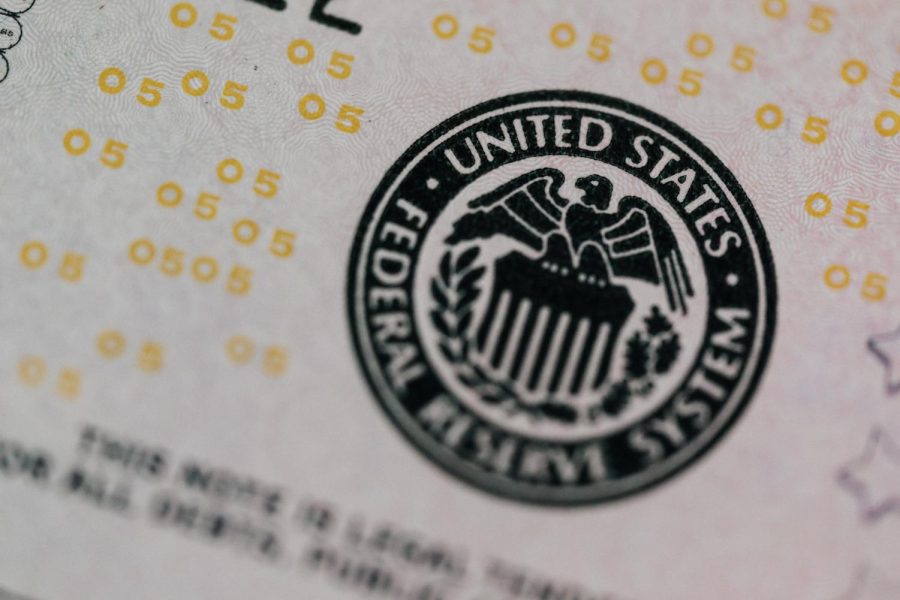The U.S. might hit the debt ceiling. What now?
Managing Editor Laken Kincaid discusses what course of action the U.S. can take to avoid defaulting.
Feb 17, 2023
Undoubtedly, the American political scene is drawing more and more attention from the country’s populace by the day. From Rep. Kevin McCarthy exhausting 15 separate ballots to earn himself the Speaker of the House position amidst heavy Republican holdouts and a united Democratic front to the onslaught of controversy encapsulating figures like Rep. George Santos, it is hard to find a single citizen that does not know some semblance of what is happening on Capitol Hill.
Yet, between balloons both in the sky and on the House floor as well as screaming Representatives doing a haphazard three-point turn in their rhetoric live on C-SPAN, some crucial discussions are being lost amongst the chaos and murmurs in the chamber. What is the biggest, most terrifying situation that everyone seems to be forgetting? The debt ceiling.
This financial brink, which was originally created through the Second Liberty Act of 1917 to pay for large expenses like the looming Great War, is defined by Investopedia as “the maximum amount of money that the United States can borrow cumulatively by issuing bonds.” However, the true debt limit that we see today with a hard cap was not established until 1939 during the heat of another global conflict. According to John Carroll University Economics professor Lindsay Calkins, the “debt increases when the federal government spends more than its revenue.”
“When this happens, the government typically borrows by issuing bonds,” Calkins elaborated. “When you buy a bond, you are loaning money to the government, which will not only pay you back at some specified time but will also pay interest on that loan.”
However, consistently, the United States has not made headway on recouping from their bills. If anything, it seems like they are only continuing to dig themselves deeper into financial hardship. Throughout the past century, the debt ceiling has been increased 90 times with 74 of those being between 1962 and 2011; the only president who has not altered the debt ceiling since its conception in 1917 was Herbert Hoover. Currently, the rapid increase is attributed to the mass unemployment circulating around the United States and global upset like the Russia-Ukraine conflict.
“Each year, the amount by which government spending exceeds revenue is the annual deficit and a simple (though not entirely accurate) way to think about the debt is that it represents the accumulated deficits,” Calkins stated. “The U.S. Federal debt is currently $31.541 trillion according to the U.S. debt clock and the ratio of debt to GDP (gross domestic product) is over 100%. This ratio is up significantly from 39% in 2008 and 77.6% in 2018.”
On Jan. 19, 2023, U.S. Treasury Secretary Janet Yellen predicted that the federal debt ceiling would be broken following a $2.5 trillion rise in Dec. 2021, placing the official debt at $31.381 trillion. Yet, it seems that it may be a tad bit more difficult to deal with the money this time around.
Currently, the decision on how to deal with the approaching limit is under heavy fire, specifically by Republicans who Biden has called “fiscally demented” in the press. Calkins says that the debate on raising the debt ceiling comes down to the argument on “paying for spending decisions that have already been made” and there is a problem with politicians threatening to use their consensus as political capital. “Showdowns over increasing the debt ceiling typically arise because some want to use it as leverage to force Congress and the president to limit government spending. Not raising the ceiling means that spending already agreed upon must be reduced. ”
The House Democrats seem to be on the same page both with how to approach the debt ceiling problem and that they will not be making any moves on solving the issue until the other side of the aisle presents a cohesive plan. However, this may take a substantial amount of time. While McCarthy may be open to ideas and more progressive policies, lawmakers like Florida’s Rep. Matt Gaetz are digging their heels in on cuts to liberal agencies like Medicard, showing that compromise even just within the Republican party may be far off in the future.
Luckily for Congress, as stated by the Committee for a Responsible Federal Budget, the Treasury Department is currently utilizing “extraordinary measures” which is expected to put off a national debt default until June. In spite of this, if agreements aren’t reached within the next few months, the American economy may see a huge hit, especially when considering the slowdown visible in the economy today. According to Calkins, the more time lost on Capitol Hill, “the more damage the country will incur” including an increase in borrower costs and less participation in the market overall.
“The big problem is that the consequences of not raising the debt ceiling could be potentially disastrous,” Calkins continued. “The consequences of defaulting on interest payments would mean a loss in investor confidence in U.S. securities (people and institutions will be more reluctant to loan money to the U.S. government), higher interest rates (after a default, encouraging people to loan the government money will necessitate higher interest rates and since bond interest rates are used to determine other interest rates, interest rates, in general, will rise), a decline in the stock market and a possible recession risk.”
Currently, there is no predicted timeline as to when either Republicans will rally or when a conclusion will be reached altogether. Nevertheless, the U.S. political sphere is still being shrouded by other issues entrenched by the current state of media today. A fear shared by economists and political scientists alike is that not only the ceiling collapse but that congressional spending altogether will be ignored in exchange for the glitz and glamor of publicized quarrels. Well, at least until this disregard for legislation turns into a fiscal crisis for all Americans regardless of their partisan alignment.













